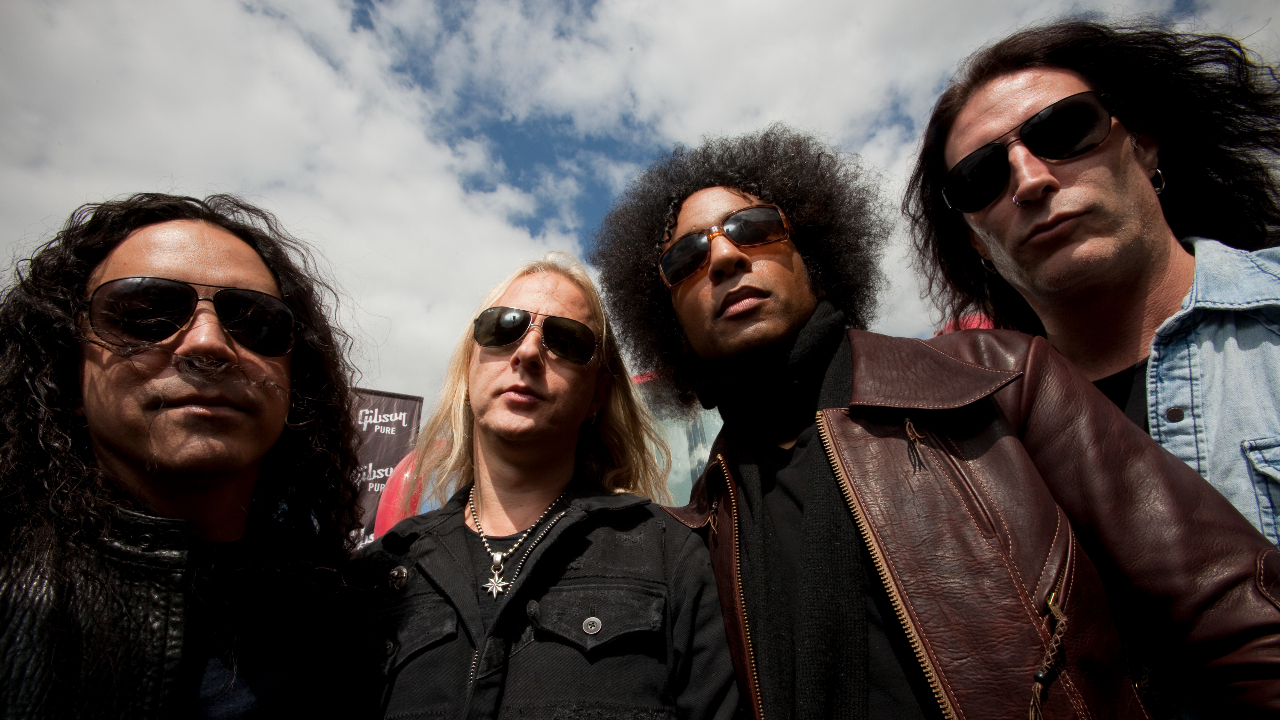How Jack White and the White Stripes breathed new life into the blues
There’s always another supposed saviour coming along to resuscitate the blues. Jack White is one of those who actually did

“I would much rather have lived in the twenties or thirties,” Jack White sighed to the NME in 2001, the morning after The White Stripes’ second gig in the UK, “but that will never be. My dream of being a black man in the thirties is not going to happen.”
It’s as bold and manic a statement as any white rocker has ever blurted about the questions of race that dig like spurs into rock’n’roll’s use of the blues. It’s what Eric Clapton and Jimmy Page likely felt in Surrey’s leafy ghetto, and Elvis Presley before them.
Jack was a twenty-first-century blues acolyte willing to go way too far in his unhinged pursuit of authenticity. He grinned as he finished making that statement to the NME, faintly recognising the absurdity of his words. But still he continued. “As far as hardships go,” he said of a generation of black Americans who could still be lynched legally in Mississippi, “at least their lives made sense to them. They were playing for money and they were playing to get by. Music was a form of communication.”
Born John Gillis (he later took his wife Meg’s surname) in Detroit’s Mexicantown and having attended a largely black and Latino school, he was hardly ignorant of race’s musical trip wires. Distaste for hip-hop’s dominance among his 90s classmates had left him a freakishly inverted, archaic figure as a teenager.
This tall, deathly pale white boy could be found after school strumming blues guitar on his parents’ porch like a cotton-picker after chores, to the violent derision of his peers. The idea that such a nerdy outsider could be a bluesman despite his mojo not noticeably working would broaden the music’s scope when the monomaniac White forced the world to listen.

As I discovered on trips to Detroit and Nashville researching my biography of him, Jack White: How He Built An Empire From The Blues, he has in fact made a thriving music business materialise around him, through The White Stripes’ campaign of blues evangelism.
This was a march into the heart of the charts so redolent with mystery that it already seems a historic product of an almost pre-internet age, when a woman’s ex-husband could turn her into his sister and the world chose to believe it, falling for a brazen smoke-and-mirrors deception that brought the blues songbook’s incestuous voodoo to life every night that his White Stripes partner Meg faced down Jack’s bitter guitar sallies from behind her drum kit.
Sign up below to get the latest from Classic Rock, plus exclusive special offers, direct to your inbox!
And yet in 2020, his label, Third Man Records, has not only been fundamental in the equally archaic vinyl format’s revival, it is also reissuing old blues gold for a new generation, pressing up the complete works of the Mississippi Sheikhs, Blind Willie McTell and the early, Detroit John Lee Hooker, in stylish editions designed to snare generations too young even for The White Stripes.
He has also set Beck, Laura Marling and others to work making often blues-based seven-inch singles in his Nashville Third Man HQ’s studio. White has become both custodian and salesman of America’s blues legacy.
His own path to the music was a twisted one, including study of the Gun Club, Captain Beefheart, Bob Dylan, Betty Boop cartoons (where he and Meg heard St. James Infirmary Blues) and Led Zeppelin, the latter influence so obvious, as his solos in later Stripes shows threw off their punk straitjacket and went squalling, Page-like, into the stratosphere, that he has felt compelled to studiously ignore it.
He was also a Nirvana fan when MTV Unplugged in New York was released in 1994, and the 19-year-old White heard Kurt Cobain’s bloody evisceration of Lead Belly’s Where Did You Sleep Last Night? (itself an epochal, enduring transmission of blues values).
It was in the unlikely setting of a 1993 Radiohead gig, though, that Jack heard Son House’s John The Revelator played as intro music, and was truly transformed by blues.
Investigating further, Son House’s Grinnin’ In Your Face, its lyrics describing how this troubled adolescent felt the world treated him at times, pierced his heart even deeper. Although Son House had inspired even a virile young Robert Johnson, it was the shaking, booze-wrecked House of the Father Of Folk Blues LP (1965) that Jack heard. With just his ravaged preacher’s voice and hand-clap beats, he already had everything he needed.
“I didn’t know you could do that, just singing and clapping,” an awed White said to Jimmy Page and U2 guitarist The Edge in the guitar-summit film It Might Get Loud.“It meant everything. I heard everything disappearing.”
The White Stripes’ primal, two-piece M.O. was born here. “It was as if someone, with a single blow of the axe, had opened up the world to me… After that, my life received meaning.”
After this, Robert Johnson, whose cool young face had seemed “legitimately scary” when White first saw it on 1990’s The Complete Recordings compilation, “became extremely beautiful”.
He also bought a stack of discarded blues reissues on the Document label, deepening his blues studies with Tommy Johnson, Blind Boy Fuller, Mississippi John Hurt and Blind Willie McTell. “You pull certain things from those guys,” White told Rolling Stone. “From Kokomo Arnold I get the natural phrasing. From Blind Willie Johnson it’s the slide.”
Blues was anyway already widespread in the Detroit underground of record-collecting garage bands that White joined in the 90s, as cheap CD reissues made it readily available to cognoscenti.
The White Stripes’ 1999 self-titled debut album included St. James Infirmary Blues, and 2000 follow-up De Stijl had a raw, fuzzed-up Death Letter plus a spindly take on Blind Willie McTell’s Your Southern Can Is Mine. In the slipstream of 2003 single Seven Nation Army, both became million sellers.
“I’m not black, I’m not from the South and it’s not 1930,” White explained in 2002, retracting his earlier crazed statement. “I just believe in singing John The Revelator one more time.”
“The White Stripes were lucky to have that to draw on,” Troy Gregory of Detroit garage veterans The Witches told me. “Like the Stones and Zeppelin had, they were able to dip into these great old songs and reinterpret them. And you had all these young kids who didn’t even know the Zeppelin or Stones versions, so to them it was brand-new and exciting.”
White saw this not as commercially cute, but missionary work. “If we can trick fifteen-year-old girls into singing the lyrics to a Son House song,” he told his friend, the film director Jim Jarmusch, “we’ve really achieved something.”
Blues might be the most crucial element of rock’s DNA, the shot of sexual swagger and illicit danger that country music, for one, just can’t cut, but its cellular strands aren’t immortal. As a teenager just a little older than White in the 80s, I can recall reading in NME Charles Shaar Murray’s hip profiles of ageing bluesmen, as he communicated the devotion to an alien, exotic form that had slavishly mesmerised a generation of teenagers into detonating the British blues boom. But that charged meaning had already faded, and blues had almost no purchase on adolescent minds.
On Glastonbury’s Pyramid Stage in 2003, The White Stripes spent seven and a half minutes excavating all there was to find in Death Letter and Blind Willie Johnson’s Motherless Children.
“Does anyone know the name of the person next to them?” Jack asked, trying to conjure the intimate humanity he heard in this music in the 40,000-strong massed in front of him. More blues, in the form of Boll Weevil and the then unreleased Elephant’s tumultuous, sparking and shrieking guitar centrepiece Ball And Biscuit, crackled through the set.
Did any 15-year-old go home tricked into Son House fandom? The old bluesman was at least being smuggled into mass consciousness for the first time in 30 years. The radical jolt White was applying to the blues’ slumbering carcass was way too much for Eric Clapton, who decried The White Stripes’ version of Death Letter that he watched from the audience at that year’s Grammys.

After Jack and Meg’s musical marriage expired too, there was a blues postscript. In his solo work, Jack retired The White Stripes’ iconic red, white and black in favour of blue clothes and records. And on 2014’s Lazaretto, an album haunted by divorce and death, he returned to Blind Willie McTell to cover Three Women.
The sleeve showed Jack as a bluesman in hell, slumped, glowering on his cemetery throne like Satan himself. But the video for the single Freedom At 21, from Kanye West’s regular director Hype William, showed Jack as an icy guitar man in a hyper-sexualised, digital, hip-hop environment. The music too coursed with hip-hop currents. He was trying again to bring blues to the rap mainstream who had once sneered at him on his porch.
White’s direct influence on 21st-century blues players such as Gary Clark Jr., Kill It Kid and Fantastic Negrito is debatable (the latter especially needs no lessons from him on blues relevance to contemporary black lives). But as these musicians root around in the pre-war blues that struck the young Jack like a thunderbolt, and cover the primal likes of Blind Willie McTell, a torch that might have been snuffed out without The White Stripes has again been passed on.
After all, at the turn of the century rock itself was widely written off, until The White Stripes’ blues-based conviction helped resurrect it.
“There are a lot of really talented guitar players that have come up since then, in bands like Crooks and The Pizazz,” Matt Smith, another Detroit garage veteran, told me of the city’s current generation. “These kids all told me that the only reason they picked up a guitar is because they heard The White Stripes. There’s a whole generation who told me if it wasn’t for Jack White they’d have been DJs. I’ve heard that again and again from younger musicians.”
Perhaps exhausted by the self-imposed rigours of an unforgiving musical existence that has applied the restrictions of 1930s black musicians to a weird, wondrous white Detroit boy, Jack White’s influence has dimmed altogether in the last couple of years, with new solo and Raconteurs albums having been released to little response. But while Third Man still rediscover and release the blues treasures that first set White on his quest, his importance to this improbably immortal music will endure.
Nick Hasted's Jack White: How We Built an Empire from the Blues is available from Amazon.
Nick Hasted writes about film, music, books and comics for Classic Rock, The Independent, Uncut, Jazzwise and The Arts Desk. He has published three books: The Dark Story of Eminem (2002), You Really Got Me: The Story of The Kinks (2011), and Jack White: How He Built An Empire From The Blues (2016).

